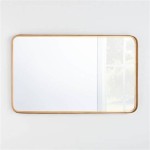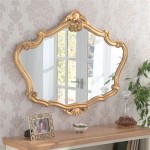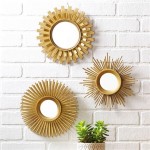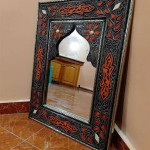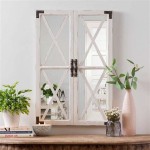Understanding One-Way Mirror Glass
One-way mirror glass, also known as two-way mirror or observation mirror, is a specialized type of glass that exhibits reflective properties on one side and transparent properties on the other, under specific lighting conditions. This unique characteristic makes it suitable for various applications requiring discreet observation or surveillance. The functionality of one-way mirror glass relies on a precise interplay between light intensity and a thin, semi-transparent metallic coating applied to one side of the glass.
The underlying principle of operation involves differential illumination. The room intended for observation, which is viewed through the transparent side of the glass, must be significantly darker than the room or area being observed. This difference in light intensity exploits the metallic coating's ability to both reflect and transmit light. The brighter side experiences a higher intensity of light, causing the coated surface to reflect a considerable portion of it, creating a mirror-like effect. Simultaneously, a fraction of the light from the brighter side passes through the coating and the glass itself.
Conversely, the darker observation room has substantially less light available to be transmitted back through the glass. The small amount of light that does emerge from the observation room is overwhelmed by the reflected light from the brighter side, rendering the observation room effectively invisible to those on the brighter side. This creates the illusion of a standard mirror for individuals in the well-lit space, while simultaneously allowing observers in the darker room to see through the glass without being detected.
The effectiveness of one-way mirror glass is heavily dependent on maintaining a significant light differential between the two sides. The ideal lighting ratio is generally considered to be at least 10:1, meaning the observed area should be at least ten times brighter than the observation area. Reducing the light intensity in the observed area or increasing the light in the observation area diminishes the mirror effect and can compromise the privacy of the observers.
Key Point 1: Manufacturing and Composition
The production of one-way mirror glass involves a specialized coating process applied to a standard glass substrate, usually float glass. The most common technique is sputtering, a process where a thin layer of metal, typically aluminum, silver, or chromium, is deposited onto the glass surface in a vacuum environment. This metallic coating is extremely thin, measured in nanometers, allowing for partial light transmission. The precise thickness of the metallic layer is crucial; it must be thin enough to allow some light to pass through but thick enough to reflect a substantial amount of light.
During the sputtering process, ionized gas atoms bombard a target made of the coating material. These atoms dislodge atoms from the target, which then deposit onto the glass substrate. The process is carefully controlled to ensure a uniform and consistent coating thickness. The uniformity of the coating directly affects the optical properties of the one-way mirror glass, influencing its reflectivity and transmissivity.
The substrate material can vary, with different types of glass offering varying levels of clarity, durability, and safety. Tempered glass, for instance, is often used to enhance the strength and safety of the one-way mirror glass, particularly in applications where breakage is a concern. Laminated glass, consisting of multiple layers of glass bonded together with an interlayer, provides even greater safety and security, as it resists shattering and can contain fragments if broken.
The selection of the specific metal used for the coating also influences the overall appearance and performance of the one-way mirror. Different metals have different reflectivity characteristics across the visible light spectrum, which can affect the color tone of the reflected image. Furthermore, the metal's resistance to corrosion and environmental degradation is a consideration for long-term durability.
Key Point 2: Applications of One-Way Mirror Glass
The unique properties of one-way mirror glass make it an invaluable tool in various fields, ranging from law enforcement and security to scientific research and entertainment. Its ability to facilitate discreet observation is the primary reason for its widespread use.
Law enforcement agencies utilize one-way mirrors extensively for interrogation rooms. The ability to observe suspects without being seen allows investigators to monitor their behavior and reactions in a controlled environment, aiding in the gathering of evidence and the assessment of credibility. The presence of a one-way mirror can also create a psychological effect, potentially inducing stress or anxiety in the suspect, leading to more candid responses.
In retail settings, one-way mirrors are employed for loss prevention and security monitoring. Store personnel can observe customers and staff discreetly, helping to deter theft and identify potential security threats. This covert surveillance can be more effective than overt security measures, as it doesn't alert potential offenders to the presence of monitoring.
Psychologists and researchers utilize one-way mirrors in observational studies. These mirrors allow researchers to observe subjects in a natural setting without influencing their behavior. This is particularly beneficial in studies involving children or individuals who may be sensitive to observation. The ability to observe unobtrusively minimizes the Hawthorne effect, where subjects alter their behavior because they know they are being observed.
In the entertainment industry, one-way mirrors are used to create illusions and special effects. They can be incorporated into haunted houses, escape rooms, and other interactive experiences to provide a sense of mystery and deception. The mirrors can be used to create the illusion of hidden passages, disappearing acts, or ghostly apparitions.
Educational institutions also utilize one-way mirrors in teaching hospitals and training facilities. Medical students and other healthcare professionals can observe experienced practitioners interacting with patients without being disruptive. This provides a valuable learning opportunity and allows students to observe a wide range of clinical scenarios.
Key Point 3: Limitations and Considerations
Despite its versatility, one-way mirror glass has inherent limitations that must be considered when planning its implementation. The lighting requirement is the most significant constraint. As previously mentioned, a substantial difference in light intensity between the two sides of the glass is crucial for its proper function. If the lighting conditions are not properly controlled, the mirror effect can be compromised, and the observation room may become visible.
The size of the one-way mirror can also affect its performance. Larger mirrors require more uniform lighting across the observed area to maintain the mirror effect. Variations in light intensity across the mirror's surface can create inconsistencies in reflectivity, making certain areas more transparent than others.
The positioning of the one-way mirror is also an important consideration. The angle of observation can affect the viewer's perception of the mirror. At extreme angles, the mirror effect may diminish, and the observation room may become more visible. Careful planning is needed to ensure that the viewing angle is optimal for discreet observation.
Ethical considerations are paramount when using one-way mirror glass. It is essential to comply with all applicable laws and regulations regarding privacy and surveillance. In many jurisdictions, it is illegal to use one-way mirrors to observe individuals without their knowledge or consent. Furthermore, the use of one-way mirrors can raise ethical concerns about deception and manipulation. It is important to use these mirrors responsibly and transparently, particularly in situations where individuals may be unaware of their presence.
Maintenance of one-way mirror glass is also crucial for its longevity and performance. The metallic coating is delicate and can be easily damaged by scratches or abrasive cleaners. It is important to clean the glass with a soft cloth and mild detergent to avoid damaging the coating. Regular cleaning is necessary to maintain the clarity and reflectivity of the mirror.
Finally, it is important to remember that even under optimal conditions, one-way mirror glass is not entirely foolproof. Under very specific circumstances, such as very bright light in the observation room, the mirror effect can be partially compromised. Professional installation and careful adherence to recommended lighting guidelines are essential for ensuring the effectiveness of one-way mirror glass in its intended application.

How To Install One Way Mirror Morn Glass Best Architectural Supplier

4mm One Way Glass

Suntek Drmps 7 One Way Mirror Specialty Series

Decorative Mirror Glass One Way Two China Clear Float Made In Com

Black Plain One Way Mirror Glass Size 3210 X 2250 Mm Thickness 7mm

Does One Way Mirror Tint Work After Dark Ap Tinting

One Way See Through Mirror Glass Two Mirrors China Wall Made In Com

One Way Mirror Glass

Easy Ways To Make A One Sided Mirror With Pictures Wikihow

One Way Two Mirror Glass 4mm 6mm 8mm 10mm 12mm China Wall Mirrors Made In Com

